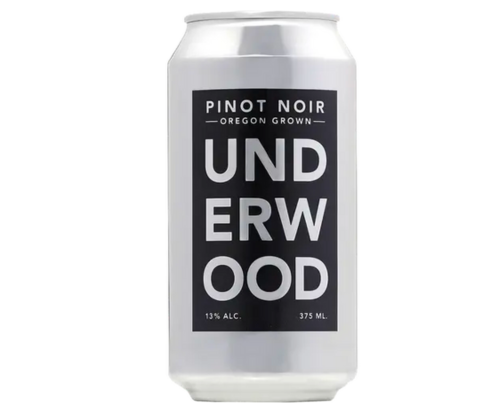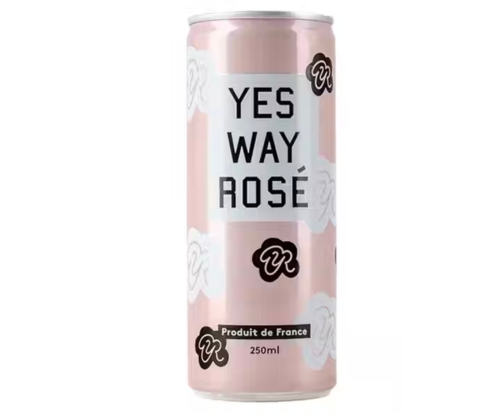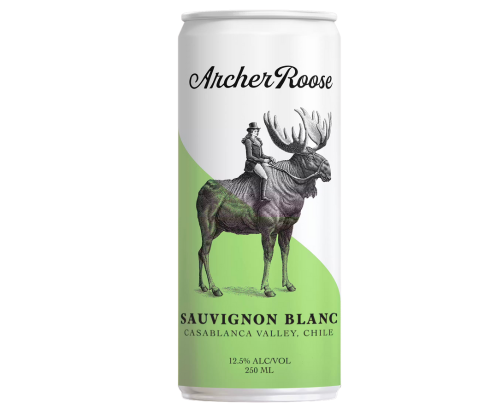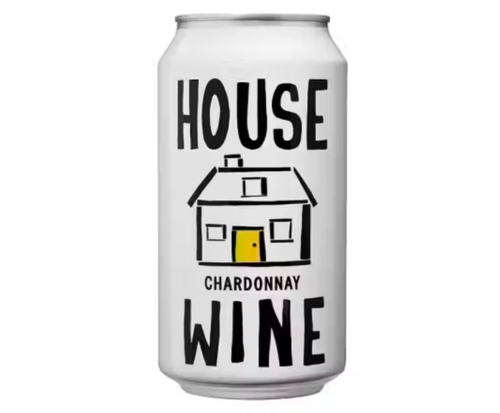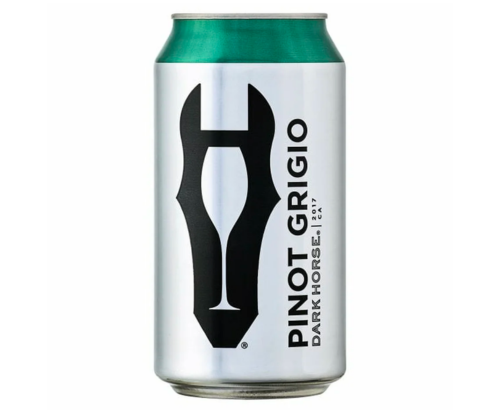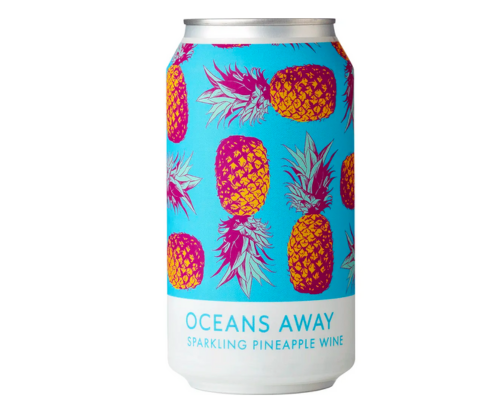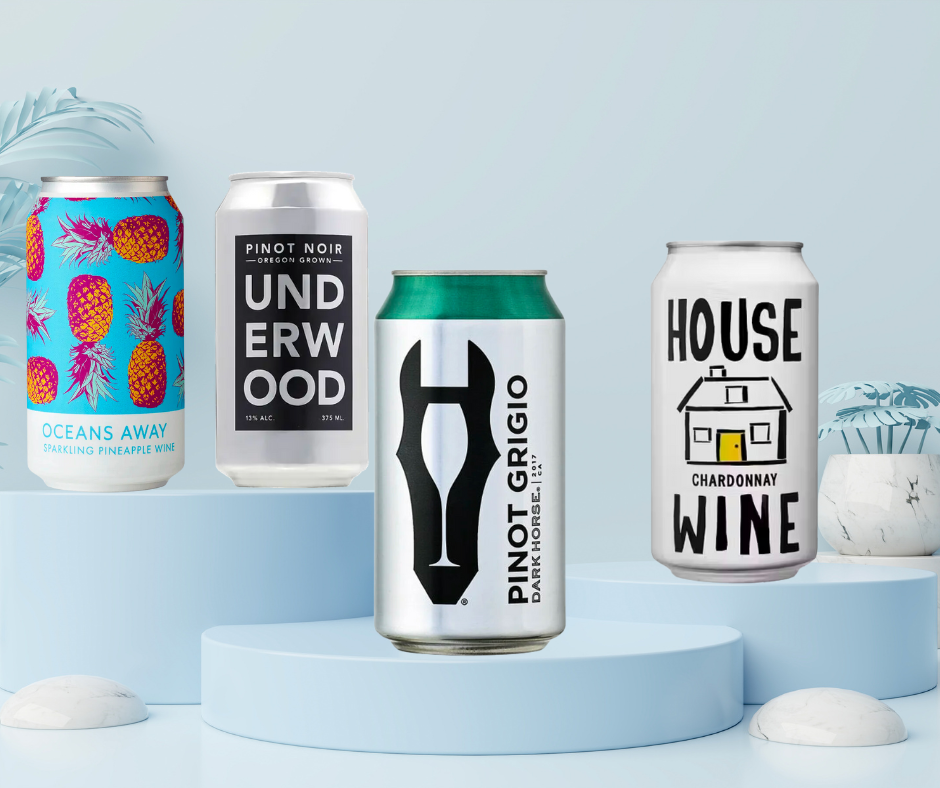
Some may find canned wine to be a bit lowbrow, but I’m always open to trying new things, checking my wine-ego at the door, and just giving things a chance. And while there are some wines in the can that aren’t the best, there are some really nice options where you wouldn’t be able to tell the difference if it came direct from the bottle or not.
Overall the canned wine market continues to surge. Just two years ago it was valued at more than $240 million/year. By the year 2030 (not that far away) it’s expected to grow to more than $725 million/year. Since it’s not really going anyway, I say give it a go. You may be pleasantly surprised!
Besides just giving you some of my personal favorite canned wine brands, I’ll walk you through the differences between the can vs. the bottle, different food pairings per canned wine, which regions to focus in on and so much more. So get ready to crack open that can and enjoy a surprisingly amazing wine.
The Canned Wine Guide - The 6 Best Picks
What's the Real Difference Between Canned Wine & Bottled Wine?
I’ve had friends that tried to convince me that drinking wine out of the can was completely different than the bottle. Actually, it’s not really that different. And the actual differences aren’t really that big of a deal.
Packaging: The most obvious difference is the packaging. Canned wine is packaged in aluminum cans, while traditional bottled wine comes in glass bottles. The advantage of cans is that they are lightweight, portable, and easy to store. They are also more environmentally friendly than glass bottles, as they’re easier to recycle and produce fewer carbon emissions during transportation.
Size: Canned wine typically comes in smaller sizes, ranging from 250ml to 375ml, whereas traditional bottled wine comes in 750ml sizes or larger. This makes canned wine a convenient option for single servings or parties outside, while bottled wine is better suited for sharing with others over a meal.
Aging: Canned wine is generally meant to be consumed within a year or two of being bottled, while traditional bottled wine can be aged for several years, even decades, depending on the wine. The shorter shelf life of canned wine is due to the material of the can and the lack of a cork or seal to prevent air from entering the wine.
Quality: While some people may view canned wine as a lesser-quality option, this isn’t necessarily true. Canned wine is often made from the same high-quality grapes as bottled wine, and is produced using the same winemaking techniques. However, the packaging and storage conditions can affect the quality of the wine over time.
Price: Canned wine is generally less expensive than bottled wine, as it is less expensive to produce and transport. This makes it a good option for those on a budget or looking for a more affordable option.
Overall, the choice between canned wine and bottled wine depends on your own personal preferences, of course. Canned wine is a convenient and portable option for those on-the-go or looking for smaller serving sizes, while bottled wine is better suited for those looking to age and enjoy their wine over time.
So now you can tell your friends who shun you for drinking out of the can that it’s not really that much different.
Take a scroll to see some of my personal favorite canned wines. There should be something for just about everyone at every budget, preference, and overall style.
1.
ALCOHOL %
13%
COUNTRY
US
REGION
Oregon
STYLE
Dry
BODY
Light
Underwood Pinot Noir canned wine is team favorite around here because it’s a delightful and easy-drinking wine that packs a flavorful punch in a fun and convenient can.
This one comes from the Union Wine Company, which is based in Oregon’s Willamette Valley, a region known for producing some of the world’s finest Pinot Noirs. So don’t judge the can, really!
In terms of taste, Underwood Pinot Noir has a smooth and fruit-forward flavor profile with notes of cherry, raspberry, and cranberry, complemented by subtle hints of oak and spice. The tannins are light and silky, making it a perfect wine for those who prefer a lighter-bodied red.
The wine comes in a 375ml can, which is equivalent to half a bottle of wine. This makes it perfect for outdoor activities like camping, picnicking, hitting up the beach, going to a BBQ – you name it. It’s also a great option for those who want to enjoy a glass of wine without having to open a full bottle.
What Does It Taste Like?
ON THE NOSE
- On the nose it has aromas of dark cherry, raspberry, and a hint of spice, along with a subtle earthiness and a touch of oak.
ON THE PALATE
- I picked up flavors of ripe cherry, raspberry, and cranberry.
- The tannins are light and silky, providing a smooth mouthfeel.
- It finishes with a hint of spice and a touch of oak, leaving a pleasant and refreshing aftertaste.
What Foods to Pair It With
As for food pairings, Underwood Pinot Noir pairs well with a wide range of dishes, thanks to its versatility.
This wine’s bright acidity and juicy fruit flavors make it an excellent match for roasted or grilled meats, such as chicken, pork, or lamb. It also pairs well with grilled vegetables, mushrooms, and even pizza.
If you’re in the mood for something sweet, try pairing it with dark chocolate.
Pros & Cons
WHAT I LOVED:
- I loved that it had a fruit-forward flavor profile.
- Good balance of acidity and tannins, resulting in a smooth and well-rounded mouthfeel.
- Notes of dark cherry, raspberry, and spice that give it depth and complexity.
JUST A HEADS-UP
- Some may find the fruitiness of the wine too simplistic or lacking complexity compared to other Pinot Noirs.
- The wine may not age as well as bottled wines due to the packaging.
2.
ALCOHOL %
11.5%
COUNTRY
France
REGION
Southern
STYLE
Dry
BODY
Light
Founded in 2013 by Erica Blumenthal and Nikki Huganir, the Yes Way Rosé brand actually started as an Instagram account that basically just uploaded inspirational images of rosé and quickly went viral almost overnight.
The brand’s signature product is its own rosé canned wine (although they have bottles too, of course), which is produced in partnership with a vineyard in the south of France.
This delicious canned rosé has notes of strawberry, citrus, and white peach and, while the alcohol content is on the lower side (under 12%) it still does the trick to help you unwind on those fun summer nights.
What Does It Taste Like?
ON THE NOSE
- On the nose you’ll easily pick up tantilizing notes of fruity strawberry, refreshing citrus, and sweet white peach.
ON THE PALATE
- Yes Way Rosé in the can still has a refreshing acidity with flavors of raspberry, strawberry, and a hint of minerality.
While most find this canned must-have to have a light body with a dry finish, I actually find it to have more of a light-to-medium body. Either way, it’s still a crisp and refreshing wine with a fruit-forward profile that is perfect for summertime sipping.
What Foods to Pair It With
Since Yes Way Rosé is a refreshing wine with delicate fruity and floral notes, I find that it pairs well with things like:
Light Salads: Its bright acidity and fresh fruit notes make it an excellent match for light, summery salads. Try pairing it with a simple salad of mixed greens, fresh strawberries, and goat cheese.
Seafood: The crisp, clean flavors of this canned wine make it a great partner for seafood. Pair it with a plate of grilled shrimp or a seafood salad for a light and refreshing meal.
Charcuterie: The light, fruity notes in make it a perfect match for your next charcuterie board. Try pairing it with a selection of cured meats, fresh fruits, and salty cheeses.
Light Pasta Dishes: Try some light pasta options, such as pasta primavera or spaghetti with fresh tomatoes and basil.
Pros & Cons
WHAT I LOVED:
- It has a fruit-forward profile without being too fruity.
- The price per can is pretty decent compared to some other canned wines.
- It’s a fun canned wine for pairing with light, summery foods like salads or grilled seafood, but you really can sip it with basically anything.
JUST A HEADS-UP
- The alcohol content is on the lower side compared to some other similar rosé brands, so while that’s not a bad thing, it may take you a bit longer to get that rosé buzz you’re planning for.
- Yes, it’s all over social media so you may find it to be a bit of an eye-roll at this point, but it’s still a really tasty and fun canned rose.
3.
ALCOHOL %
12.5%
COUNTRY
Chile
REGION
Maule Valley
STYLE
Crisp
BODY
Light
I found Archer Roose Sauvignon Blanc canned wine to be a totally refreshing and crisp white. It comes from the Central Valley region of Chile and, even though it comes in a can, I really liked this one.
On the nose, the wine offers aromas of tropical fruit, citrus, and grass, which gives it a lively and aromatic character. On the palate, it has bright acidity and flavors of grapefruit, lime, and green apple.
I find it to be a light to almost medium bodied wine (but I’ll officially list it as a light wine) and it has a truly refreshing finish that lasted pleasantly on my palate.
For those that are into this, this wine is vegan, organic, and sustainably produced, making it a great choice for those who are environmentally conscious!
What Does It Taste Like?
ON THE NOSE
- It has aromas of tropical fruit, citrus, and grass, which gives it a lively and aromatic character.
ON THE PALATE
- I picked up flavors of grapefruit, lime, and green apple, with a touch of herbaceousness.
- These notes make for a refreshing and crisp wine that is perfect for warm weather.
What Foods to Pair It With
One of the best things about Archer Roose Sauvignon Blanc is its versatility when it comes to food pairings.
I find it pairs well with a wide range of dishes, including seafood, salads, and light pasta dishes. Its acidity and bright citrus notes also make it a perfect pairing for spicy and flavorful meals too.
Pros & Cons
WHAT I LOVED:
- I find it refreshing and crisp, perfect for warm weather.
- Versatile wine that pairs well with a wide range of dishes, including seafood, salads, and light pasta dishes.
- Sustainable and organic production methods make it a great choice for environmentally conscious wine drinkers.
JUST A HEADS-UP
- Some may find the herbaceous notes too prominent.
- If you’re looking for more of a full-bodied wine, you may want to pass on this one.
4.
ALCOHOL %
12.5%
COUNTRY
US
REGION
Washington
STYLE
Dry
BODY
Medium-to-Full
This is another one of my personal favorites, especially in the can.
If you decide to pour it from the can into a glass (go, you!), you’ll notice that it’s a bright and clear golden color. It has a translucent appearance and is free from any visible sediment. Score!
I almost immediately picked up notes of tropical fruit, citrus, and a subtle hint of oak. It smells clean, fresh and, overall, pretty light.
I found it to have a light and crisp mouthfeel with middle-of-the-road acidity. Overall its flavors are well-balanced, with hints of juicy pineapple, ripe peach, and a touch of vanilla from the oak. The finish is clean and refreshing, leaving me with a nice aftertaste.
What Does It Taste Like?
Overall, Underwood Rosé Bubbles a delightful wine that showcases the fresh and fruity flavors of a traditional rosé, but with the added fun and convenience of being packaged in a can. Bring it with you just about anywhere you go.
ON THE NOSE
- A pleasant and inviting scent.
- Notes of tropical fruit, citrus, and a subtle hint of oak.
ON THE PALATE
- Light and crisp mouthfeel.
- Moderate acidity and the flavors are well-balanced.
- Hints of juicy pineapple and ripe peach.
- A touch of vanilla from the oak.
What Foods to Pair It With
Since this is one of my faves, I put together a pretty lengthy wine/food pairing depending on what you’re looking for.
Light Appetizers: Try pairing with light appetizers such as fresh salads, bruschetta, or grilled shrimp skewers. These dishes won’t overpower the delicate flavors of the wine, allowing it to shine.
Creamy Pasta Dishes: The crisp acidity of the Chardonnay complements the richness of creamy pasta dishes like fettuccine Alfredo, carbonara, or mushroom risotto.
Poultry and Seafood: This wine pairs well with grilled chicken, baked salmon, or shrimp scampi. The flavors of the wine complement the subtle flavors of the seafood and poultry dishes.
Cheese: A variety of cheeses, including brie, camembert, and goat cheese. The acidity of the wine helps to cut through the richness of the cheese, making for a delicious pairing.
Light Desserts: This wine pairs well with light desserts such as fruit sorbets, lemon tarts, or angel food cake. The wine’s acidity helps to balance out the sweetness of the desserts, making for a refreshing finish to the meal.
Pros & Cons
WHAT I LOVED:
- I love how it’s crisp and refreshing wine with notes of citrus and tropical fruit.
- It pairs well with so many different food options – from apps and mains to desserts and everything in between.
JUST A HEADS-UP
- When ordering online I have a hard time finding it in stock. I prefer ordering online so I can buy in bulk – so plan ahead!
5.
ALCOHOL %
13.5%
COUNTRY
US
REGION
California
STYLE
Slightly Sweet
BODY
Light
Dark Horse Pinot Grigio is a bright and refreshing canned wine that offers a balance of fruity and floral flavors, making it a great choice for just about any occasion.
On the nose, I found this to have aromas of citrus and green apple, with hints of peach and apricot. On the palate, I found it to be light-bodied and crisp, with flavors of white peach, lemon, and lime. The finish is smooth and refreshing, with a lingering hint of sweetness.
What Does It Taste Like?
ON THE NOSE
- On the nose I picked up scents of pear, green apple, and some citrus zest.
- Subtle hints of floral and tropical fruit notes are a nice added touch without being overpowering.
ON THE PALATE
- Flavors of crisp green apple and juicy pear.
- Hints of citrus and lemon zest.
- A refreshing acidity with a clean and dry finish.
What Foods to Pair It With
The bright and acidic nature of this wine makes it an excellent match for seafood, particularly shellfish, as well as salads and light pasta dishes. It also pairs well with grilled vegetables and cheeses. so you can serve it with the appetizers or the main meal.
Pros & Cons
WHAT I LOVED:
- Refreshing and crisp flavor profile.
- Balanced acidity and dry finish.
- Aromas of pear, green apple, and citrus zest
- Versatile pairing options with seafood, salads, and light pasta dishes.
- Affordable price point for a quality Pinot Grigio.
JUST A HEADS-UP
- For me I didn’t find it too light, but for some who are looking for a more complex wine you may want to skip this one.
6.
ALCOHOL %
11.5%
COUNTRY
US
REGION
Hawaii
STYLE
Off-Dry
BODY
Light-to-Medium
I got to be honest. I first picked this can up because of, well, the can itself. Probably the coolest on the market right now. But, trust, it’s way more than just a cool can.
This sparkling wine is basically like a mimosa in a can, which is always a good idea especially when you’re on the go and don’t have time to mix up your own.
The perfect brunch staple, Oceans Away Sparkling Pineapple wine is not a cider – it’s legit a pineapple wine and has some brilliantly refreshing scents of pineapple, mango, and a touch of light coconut. Calling it a vacation in a can doesn’t even do it justice.
What Does It Taste Like?
ON THE NOSE
- On the nose I immediately picked up pineapple, mango and a little bit of coconut.
- There a bit of a citrus aroma to it as well.
ON THE PALATE
- Bright and refreshing, I definitely get the sweet taste of pineapple, the creaminess of a ripe mango, and the slight hint of coconut that doesn’t overpower.
What Foods to Pair It With
When it comes to pairing food with this tropical sparkling pineapple wine, the natural sweetness of the wine makes it a great match for a variety of foods, including:
Spicy Dishes: The sweetness of the pineapple can help balance out the heat of spicy dishes, like Thai or Indian curries.
Salads: The fresh and fruity notes of the wine can complement a variety of salads, such as a mixed greens salad with citrus fruits and goat cheese.
Seafood: The tropical notes of pineapple can pair well with seafood, like a perfect grilled shrimp or ahi tuna poke.
Pros & Cons
WHAT I LOVED:
- The tropical notes and tastes make it a must-have for a day at the beach or a summer brunch.
- It pairs well a variety of foods.
- To be honest, the can itself is so cool.
JUST A HEADS-UP
- I personally love pineapple, but you’re definitely getting a topical/pineapple taste to this canned wine without a doubt. If you don’t like a fruity wine, you may want to skip it.
In Conclusion
Well, there you have it. To wrap this up, canned wine has become such a popular option for wine lovers over the years, offering convenience and portability without sacrificing taste.
While there are some differences between canned wine and traditional wine in the bottle, including packaging, aging, and shelf life, advancements in technology and winemaking processes have allowed for high-quality canned wines to be produced.
Whether you’re looking for a refreshing rosé, a bold red, a delightful sparkling or just about anything in between there are now many options available in canned form that are perfect for outdoor parties, chilling at the beach, having friends over for a fun dinner – you name it.
At the end of the day, it all comes down to personal preference and the occasion, but it’s safe to say that canned wine is here to stay and will continue to grow in popularity in the years to come, so give it a go!

